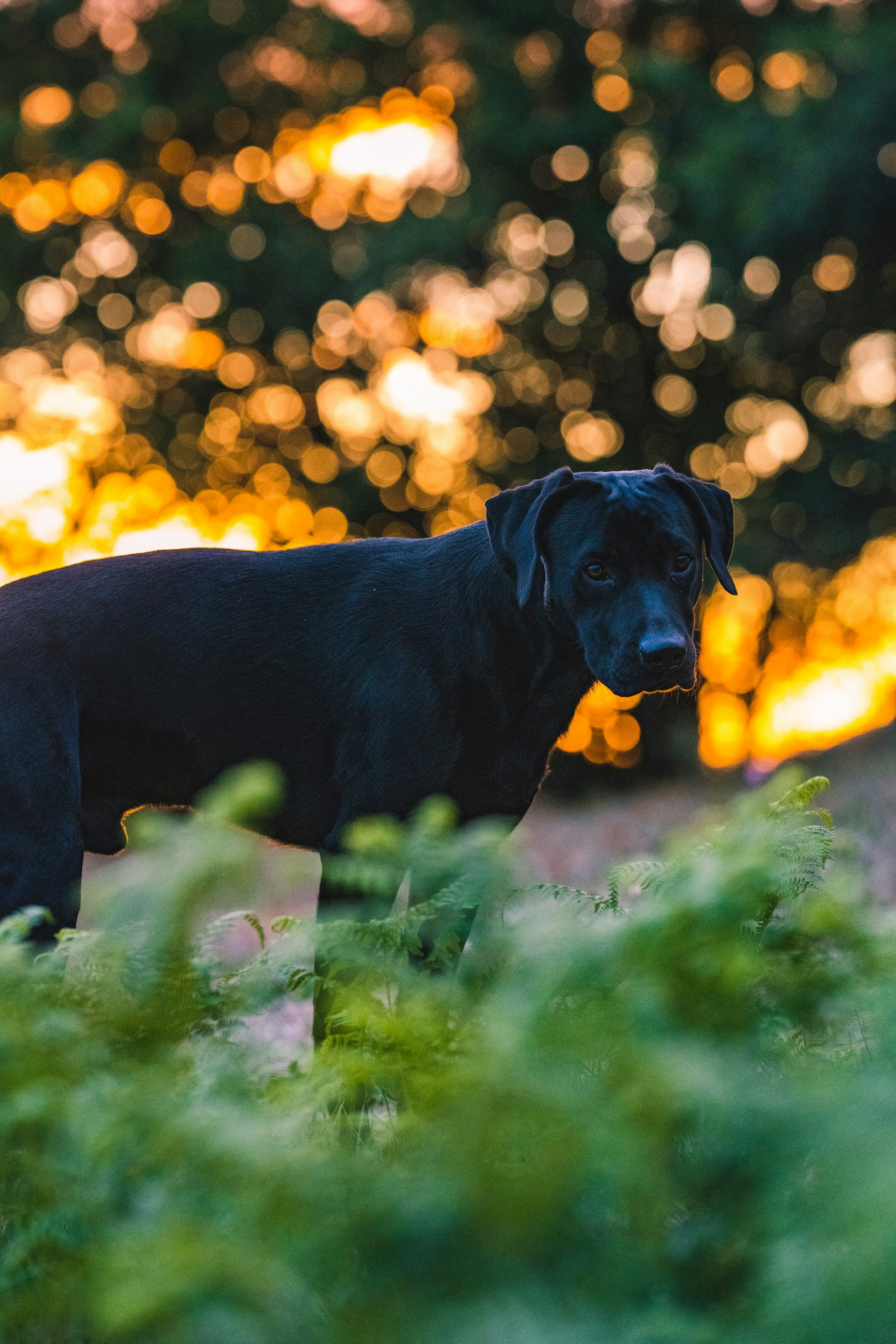We humans have a hard time navigating at night. That comes from being a diurnal animal. It’s one reason why we have such keen color vision. That’s helpful for omnivores like us to find food, whether it’s plant or meat sources. While dogs can see color, it’s not nearly as vibrant as ours because it isn’t as helpful for them to see different hues.
However, canines are a different story. Several reasons explain the contrasts, including biology, behavior, and evolution. When determining how well can dogs see in the dark, we must start with the basics of how vision works. Then, we can place canine sight in context with our own for a better understanding.

Vison Fundamentals
Human and canine eyes aren’t as disparate as you may think. After all, we share 84 percent of our DNA. The answer to how well each of us can see in the dark rests with several structures, starting with the pupil. It becomes larger when conditions are dim. The retina is the business end of vision. It contains cells called photoreceptors that interpret the light the eyes detect.
Two types of photoreceptors exist, cones and rods. The former handles light and color. The latter works with dim conditions. Canines, including domesticated dogs, have more rods within their retinas. They also have a reflective structure that sits behind the retina called the tapetum lucidum. That’s why your pet’s eyes appear to glow if light strikes them in the dark. It also gives them an edge to see better.
However, the tapetum lucidum is the dog’s ace in the hole when it comes to seeing at night. It reflects the light the eyes detect a second time. Humans don’t have this advantage, hence, the difference in our night vision.

Dog Evolution
The evolutionary pathways of canines and humans diverged about 94 million years ago. Our journey took us toward being a daytime hunter, whereas early canines adapted to primarily dim and dark conditions to become nocturnal hunters. However, they still kept the ability to get around during the day. While felines fare best at night, canines do just fine with their generalized vision.
However, both animals far exceed our ability to see in the dark. Remember that they hunt at night because it gives them an advantage. It’s hard to be seen by predators. On the other hand, early humans looked for food during the day, making color and light vision more beneficial for us.
Human Vision vs Canine Sight
Looking at the anatomy of human versus canine vision will provide additional insights into just how well dogs can see at night. We’ve already touched on the role of cones and rods. It turns out that the dim-sensitive rods have a higher concentration in the center of a dog’s retina. Differences also exist with a photopigment associated with these photoreceptors called rhodopsin.
This protein converts the dim light the rods detect into an electrical signal that the brain can interpret. Dogs have a lot more rhodopsin than humans do. That gives them a leg up on us. Canines see better at night simply because they have the anatomy to take it to the next level. However, it also brings to light another significant difference between people and dogs.
Undoubtedly, you’ve been in a situation where you had to go into the dark suddenly. Perhaps, the electricity went out in your home. Or maybe you took the kids on a night hike. One thing you probably noticed was that it took you a while to get used to the dark. Presumably, it didn’t take long, either. That is your body’s levels of rhodopsin regenerating.
It’s another story with dogs. It takes significantly longer for them to go from bright light to dark conditions because the rhodopsin regenerates much slower. It’s part of the price of being a crepuscular or nocturnal animal. But that’s not the only thing that separates human and canine vision.

Keen Sight
A benchmark in humans is 20/20 vision. You can clearly see objects from this distance. That’s not the case with dogs. Their vision is more like 20/75. That means what you see at 75 feet away is the same as what they perceive at 20 feet. That may seem like a disadvantage, but it indeed benefits canines when you put it in context.
Humans get bombarded with so many environmental stimuli that it would be a waste of time and energy to interpret every object moving, familiar sound, or non-threats around us. It’s the same with canines. Their adaptive sight puts prey that they could never catch out of its radar. Instead, they focus on the rabbit they could successfully take because it’s close enough for them to reach.
Detecting Movement and Field of View
Another stark difference between canines and humans is their ability to see movement. It’s one area where dogs far exceed our ability to see moving objects. Again, it makes sense that a predator would have this ability. It also becomes evident when you consider the distance factor. Canines can see something moving farther away than something that is standing still.
The other difference lies with our various fields of view. Anatomy gives canines a broader range because of the structure and positioning of the eyes in their skulls. It enhances their field of view by 60–70 degrees for the average dog. However, variations exist among the breeds because of selective breeding. For example, having this trait would be desirable in hunting dogs to help them perform better.
Final Thoughts
Dogs have superior night vision over humans. While we can see farther more clearly, they can detect motion with their larger fields of view. That gives them an evolutionary advantage in the field where they can spot prey species fleeing keener than we can. That can explain why we’ve chosen dogs as our hunting companions. They see what we cannot and improve both our chances of success.






